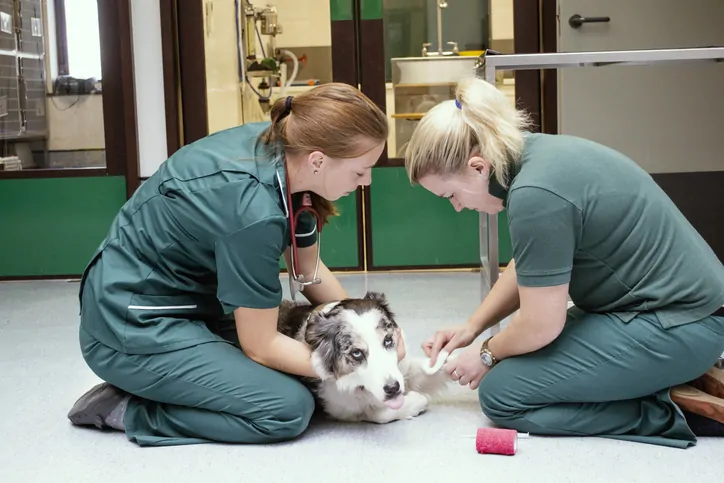If your pet's wound is deep, includes bite marks, has a deep puncture hole, has become infected, or your pet show signs of pain, then your pet needs veterinary attention.
Depending on the type of wound, your pet may need antibiotics, stitches, surgical debridement, or a Penrose drain.
Apply pressure to stop bleeding from your pet's wound, then clean it with antibacterial soap and rinse well. Light ointment and bandaging may be needed as well as an e-collar to prevent your pet from licking the wound.
Pets often suffer from cuts and scrapes and minor injuries that can usually be treated at home. However, because most pets are covered with thick fur coats, it can be difficult to see if the injury is serious.
When inspecting a wound on your pet, exercise caution. When in pain, any pet may bite, even if they are usually very docile. Wrap your pet in a towel or a muzzle to be safe.

Sometimes when your pet is wounded, it's obvious that they need veterinary attention right away. However, cats and dogs are notoriously stoic, so it's possible for their injuries to seem minor when they are actually quite serious. Some things to look for when assessing your pet's condition are:
Your vet will carefully examine your pet, assess their wounds, and look for any other injuries. For examination purposes, your pet's hair may be removed. X-rays could also be required for some wounds. Some sedation may be necessary to keep your pet calm during the examination.
The goal of wound care is to prevent infection from taking hold and spreading while permitting the wound to heal. Different approaches are needed to achieve these objectives for various types of wounds. To treat the wounds properly and without exacerbating your pet's agony, sedation or anesthesia is typically required. Various wounds and their treatments include:
When your pet is ready to go home, your vet will provide instructions about how to clean and change your pet's bandages as well as any antibiotics or pain medications your pet may need.
If there's a drain in place, let the fluid drain from the wound before using a warm, moist towel to gently clean up the debris and avoid clogging the drain. To prevent your pet from licking the wound and making it worse or from removing sutures or drains, use an Elizabethan collar.
If your veterinarian has to remove a drain or stitch or do a recheck examination, do so promptly. Even brief delays might harm your pet and lengthen the recovery process.
Minor wounds such as small cuts and scrapes may be treated at home and observed for signs of infection. The following steps can prevent infection in your pet's wound:
If the wound develops signs of infection such as redness, swelling, odor, discharge, or heat at the wound site, take your pet to their veterinarian's office as soon as possible.
Phone: (855) 461-8259
Email: [email protected]